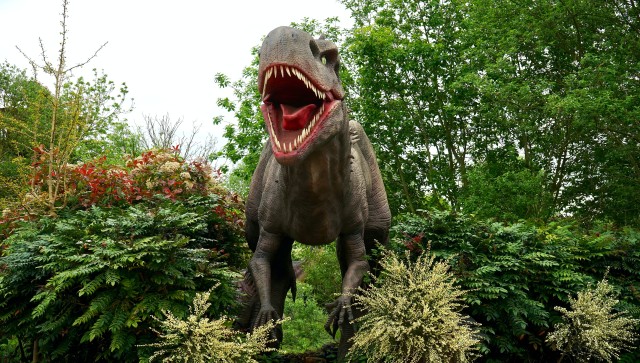Despite the fact that dinosaurs have not been on Earth for more than 65 million years, scientists still think they may exist somewhere in the cosmos. A recent study argues that a “Jurassic World” might actually exist right now, although on a different planet. The study, published in the Monthly Notices of the Royal Astronomical Society Journal, also says that we might be able to discover them by investigating materials that were present in the dinosaur era but are not present in the modern Earth. Let’s take a closer look. Oxygen can help discover dinosaurs Lead author of the study, Lisa Kaltenegger told The Sun, “Modern Earth’s light fingerprint has been our template for identifying potentially habitable planets, but there was a time when this fingerprint was even more pronounced — better at showing signs of life.” The study suggests that by looking for substances that were present on Earth during the time of the dinosaurs but are not now, scientists may find evidence of this kind of life. This is because during the age of the dinosaurs, the Earth’s oxygen content was higher—roughly 30 per cent—which allowed for the growth of complex species. The percentage of oxygen on Earth has settled down at 21 per cent today. As the researchers point out, conditions identical to those dinosaurs faced millions of years ago can be detected with specific telescopes, suggesting that those high oxygen levels may be a signal to the type of life that exists on a distant planet. [caption id=“attachment_13413642” align=“alignnone” width=“640”] A recent study argues that a “Jurassic World” might actually exist right now, although on a different planet. Pexels[/caption] Another clue is to find if a planet is in “Phanerozoic stage” One indicator that scientists can look for is whether a planet is in the Phanerozoic period, which is when massive, complex life forms can exist on the planet. “The Phanerozoic is just the most recent 12% or so of Earth’s history, but it encompasses nearly all of the time in which life was more complex than microbes and sponges. This gives us hope that it might be just a little bit easier to find signs of life — even large, complex life — elsewhere in the cosmos,” Cornell University scientist Rebecca Payne told The Sun. These distinct light fingerprints are what we should be searching for if we’re looking for something on other worlds that is more developed than a single-celled organism, according to Payne. Kaltenegger says that looking for planets with increased oxygen content may both facilitate and lead to the finding of intriguing life forms. “Hopefully we’ll find some planets that happen to have more oxygen than Earth right now because that will make the search for life just a little bit easier,” Kaltenegger said. “And, who knows, maybe there are other dinosaurs waiting to be found.” With inputs from agencies
A recent study argues that dinosaurs might actually exist right now, although on a different planet. Researchers say that we might even be able to discover them by investigating materials that were present in the dinosaur era but are not present in the modern Earth
Advertisement
End of Article


)

)
)
)
)
)
)
)
)



